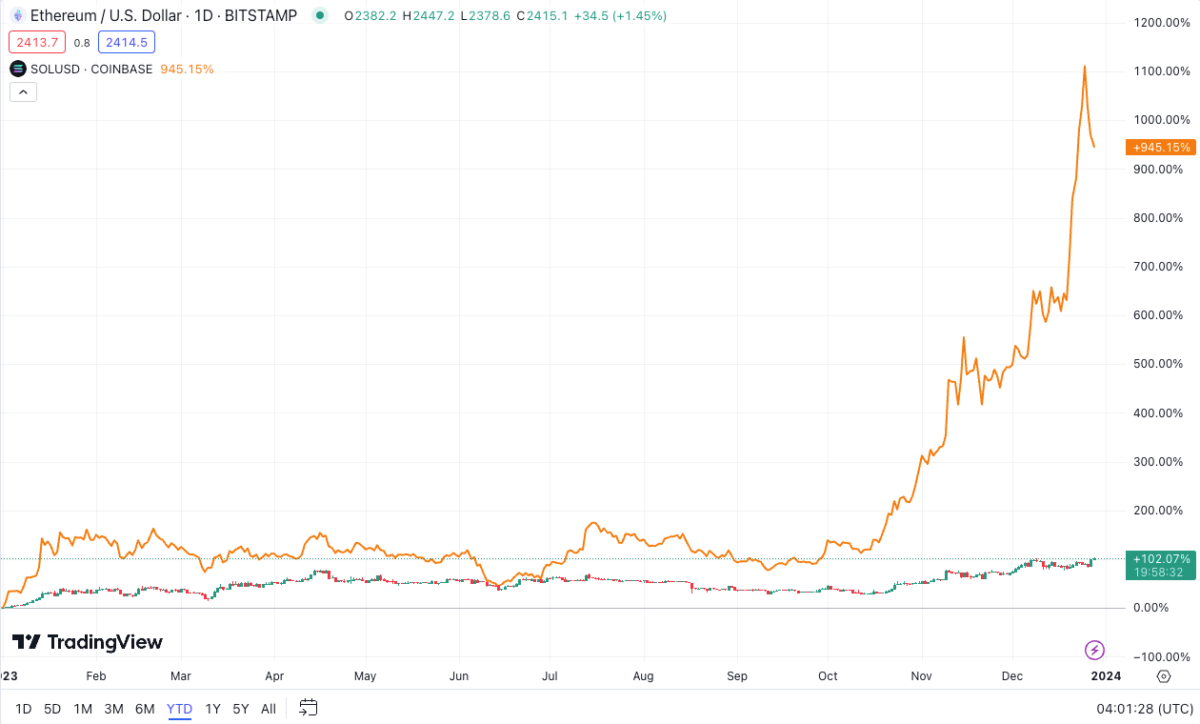Ethereum co-founder Vitalik Buterin has come up with a groundbreaking proposal that aims to ease the load on the Ethereum blockchain and simplify the proof-of-stake (PoS) consensus mechanism. The proposal aims to address current challenges posed by high numbers of validators and associated technical complexities by significantly reducing the number of signatures required by validators. Here are the details…
Ethereum will reduce validator signatures
In a recent announcement on December 28, Buterin outlined a method to reduce the load on the Ethereum network by reducing the number of signatures validators must create to protect the system. Currently supporting approximately 895,000 validators, Ethereum’s decentralization initiative has led to a high computational load of approximately 28,000 signatures per slot. While the high number of validators encourages centralization, it also introduces technical challenges, including a significant load on the network. Buterin emphasized that this issue needs to be addressed given the negative impact on quantum resistance, forking complexities, and scaling of signatures with zero-knowledge proofs.
To overcome these difficulties, Buterin advocates a moderate solution of approximately 8,192 signatures per slot; this is a significant reduction from the current 28,000 signatures. This approach promises technical simplification, improved quantum resilience, and preservation of a significant amount of total fungible ETH, which is vital for the implementation of good validator behavior. Buterin proposed three potential approaches to achieve the desired reduction in digital signature overhead: decentralized staking pools, a two-tier system with “heavy” and “light” staking, and rotating participation with responsible committees. These solutions aim to bring the signature load to a manageable level.
What do the solutions mean?
The proposed solutions provide a strategic path forward by providing a manageable signature payload for the Ethereum protocol. This will significantly facilitate protocol and infrastructure development and provide clarity for future advancements. Buterin highlighted the key advantage of setting a predictable signature payload for the Ethereum protocol, making it easier for developers to plan for future upgrades. The flexibility to increase load through hard forks will only be considered where technological advances can provide the same level of ease in managing a larger number of signatures per socket.
ETH price skyrocketed
Vitalik Buterin’s proposal marks an important step towards resolving the technical challenges facing Ethereum. While the community awaits further developments, this move could pave the way for a more efficient and scalable Ethereum Blockchain in the future. Meanwhile, pricing data reveals that the ETH price increased by 8.9% in the last 24 hours, reaching $2,417. This sudden rise comes after a period of underperformance compared to Solana. In other words, it is causing a revival of the bullish trend in the Ethereum community.
Selini Capital’s Chief Investment Officer Jordi Alexander expressed optimism about Ethereum’s resurgence, citing recent rallies in altcoins and Michael Saylor’s significant Bitcoin purchase on December 26 as contributing factors. Alexander sees a compelling risk/reward scenario for Ethereum and predicts a liquidity black hole will form in January. Despite Ethereum’s 102% annual gain, it has faced intense competition from Solana, which has achieved a staggering 951% gain over the same period. The ongoing debate between the Solana and Ethereum communities over fees, payment times, and overall blockchain superiority has intensified in recent weeks.

To be informed about the latest developments, follow us Twitter’in, Facebookin and InstagramFollow on . Telegram And YouTube Join our channel.
